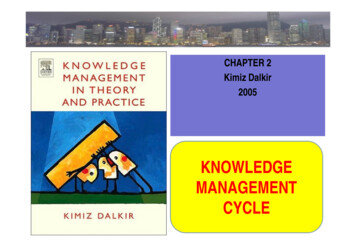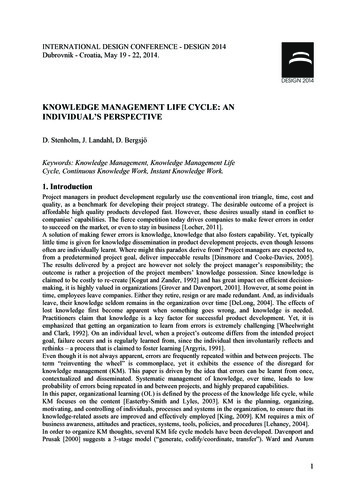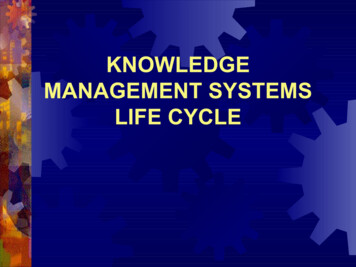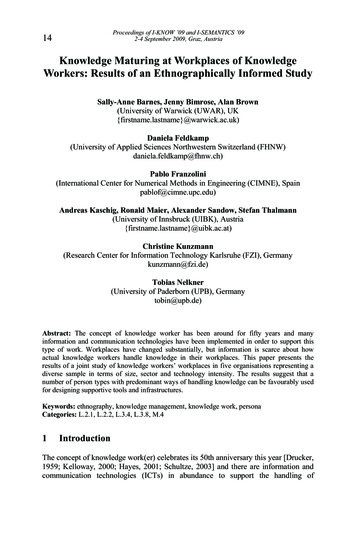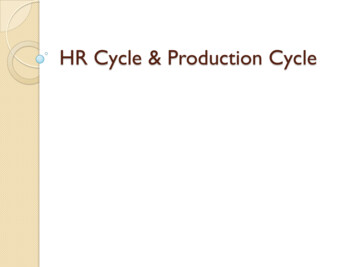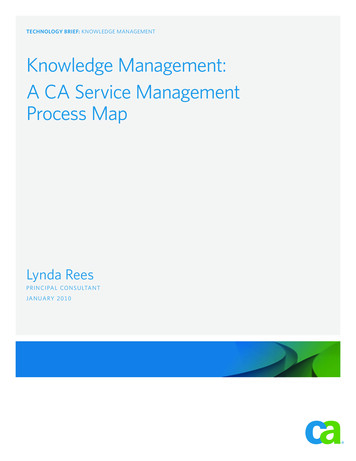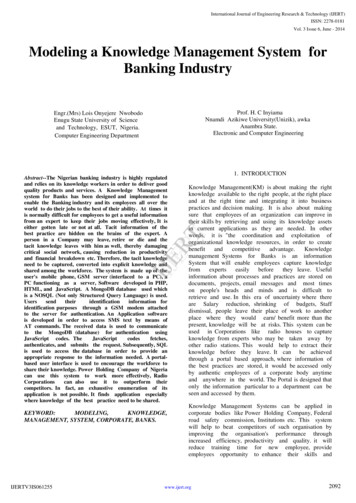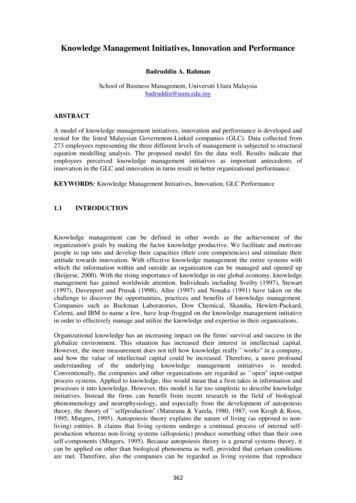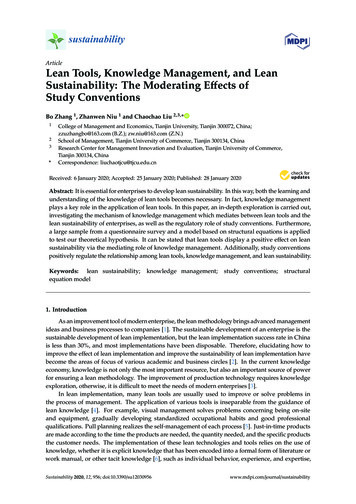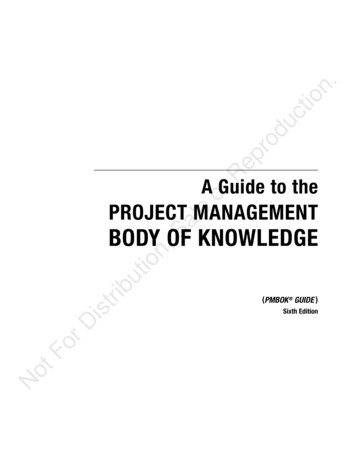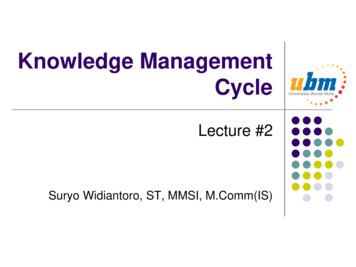
Transcription
Knowledge ManagementCycleLecture #2Suryo Widiantoro, ST, MMSI, M.Comm(IS)
Lecture ObjectiveStudents can explain Knowledge Management cycle,list some examples of major KM cycle, anddescribe the important steps in KM cycle regardinghow the knowledge is captured, created, codified,shared, distributed, and reused in the cycleSID09 - Knowledge Management2
What KM does? Identify and locate knowledge andknowledge sources in organizationTranslate valuable knowledge into explicitform codification of knowledgeDisseminate it through networks, practices,and incentivesStore it in organizational knowledgerepository corporate memorySID09 - Knowledge Management3
Major Approaches to KM Cycle1.2.3.4.Zack KM Cycle (Meyer and Zack, 1996)Bukowitz and Williams KM Cycle (2000)McElroy KM Cycle (2003)Wiig KM Cycle (1993)Criteria: Implemented and validated Comprehensive Detailed description in each stepSID09 - Knowledge Management4
Zack KM CycleBasic ThoughtResearch and knowledge about the design ofphysical products can be extended into theintellectual realm to serve as the basis for aKM cycleSID09 - Knowledge Management5
Zack KM CycleModelsourcesAcquisitionRefinementCall & butionPresentationOnline via Web& GroupwareInteractiveselectionof K UnitsusersEdit & FormatDecompose intoIndexed & LinkedK Units, Index,K UnitsLinkSID09 - Knowledge Management6
Bukowitz dan Williams KM CycleBasic ThoughtHow organizations generate, maintain, anddeploy a strategically correct stock ofknowledge to create valueSID09 - Knowledge Management7
Siklus Bukowitz dan rnContributeor : DivestSID09 - Knowledge Management8
McElroy KM CycleBasic ThoughtKnowledge life cycle consists of the processesof knowledge production and knowledgeintegration, with a series of feedback loops toorganizational memory, beliefs, and claimsand the business-processing environmentSID09 - Knowledge Management9
McElroy KM CycleModelKnowledge Processing dgeDouble-loop learningBusinessProcessingEnvironmentSingle-loop learningBeliefs and ClaimsSID09 - Knowledge ManagementKnowledgeIntegrationBeliefs and ClaimsDistributedOrganizationalKnowledge Base10
Wiig KM CycleBasic ThoughtThree conditions that need to be present for anorganization to conduct its businesssuccessfully:1. Business (products/services) andcustomers2. Resources (people, capital, facilities)3. Ability to actSID09 - Knowledge Management11
Wiig KM CycleModelBuild KnowledgeLearn from personal experienceFormal education & trainingIntelligence sourcesMedia, booksHold KnowledgeIn peopleIn tangible formsPool KnowledgeKM system (intranet, dbase)Group of peopleUse KnowledgeIn work contextEmbedded in work processesSID09 - Knowledge Management12
Integrated KM CycleBasic ThoughtThree major stages:1. Knowledge capture and/or creation2. Knowledge sharing and dissemination3. Knowledge acquisition and applicationSID09 - Knowledge Management13
Integrated KM CycleModelAssessKnowledgeCapture and/or CreationUpdateKnowledgeAcquisition andApplicationSID09 - Knowledge ManagementKnowledgeSharing andDisseminationContextualize14
Comparison of KM CycleMeyer-Zack(1996)BukowitzWilliams GetIndividual &group ge minate andassessBuild/SustainApplicationAcquisition andapplicationDivestValue realizationUpdateSID09 - Knowledge Management15
Class ActivitiesBased on the comparison, please give yourcomment on each of the KM cycle and list thestrength and weakness of each KM cycle!SID09 - Knowledge Management16
Thank you !This is the end of today’s lecture
SID09 - Knowledge Management 2 Lecture Objective Students can explain Knowledge Management cycle, list some examples of major KM cycle, and describe the important steps in KM cycle regarding how the knowledge is captured, created, codified, shar
